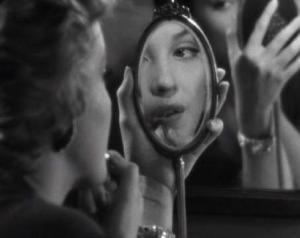 Behind makeshift barricades in the basement of a small church there will be 18 people, 17 of which will hostages of a 20-year-old schizophrenic full of sweet red wine and homemade speed. He will have his finger on the trigger of a portable nuclear device.
Behind makeshift barricades in the basement of a small church there will be 18 people, 17 of which will hostages of a 20-year-old schizophrenic full of sweet red wine and homemade speed. He will have his finger on the trigger of a portable nuclear device.A little camera and microphone hooked up to a laptop will capture and transmit the hostage-taker's cryptic announcement: "I am the Looney Tunes Bomber, my presentation will be a one-reeler."
The entire nine minutes and 11 seconds of the LTB’s ranting performance will be consumed by a rapt audience that some will estimate to be a billion viewers in its final minute.
After chuckling, “Tha, tha … that’s all folks,” he will set off the bomb.
It will blow Boise, or maybe Baltimore, off the map. The first video of the suicidal bomber’s diabolical stunt will go up on YouTube less than an hour after the appearance of the mushroom cloud.
Somewhere, in Rio, or Tokyo, or elsewhere, a heart will be beating faster in the chest of an abused and angry boy who will be instantly determined to top the LTB’s bloodthirsty audacity.
We are watching a generation grow up with an awareness of the camera that goes far beyond previous generations. And, we are also witnessing a snowballing of the ability of anyone to transmit words and images about love, hate, religion, style and politics, by way of the Internet, to a worldwide audience.
It’s anybody’s guess where the current generation’s insatiable thirst to record and share voluminous records of their everyday lives will lead ... good or bad. We do already know that revolutionaries everywhere are relying on social media in a way that is mind-boggling.
Meanwhile, more and more we are seeing news stories that are tantamount to stunts staged for willing cameras. While it's fashionable these days to scold the press for its tasteless and excessive coverage of certain events, it's not entirely the fault of media executives and editors. The stories they encounter, in some cases, have been planned and packaged by people who are damn good at planting a story.
A precedent-setter in this area occurred 32 years ago with the shameful cooperation that developed between news-gatherers for television and the Iranian "students," who demonstrated on a daily basis in front of the American embassy during the hostage crisis (1979-81) that sabotaged the presidency of Jimmy Carter.
Now we know that much of the feverish chanting and fist waving was done on cue. Now we know the camera shots were pushed in tight because the angry horde yelling, "Death to America!" was only a dozen souls deep.
Today, it seems cultural and religious grievances are routinely becoming more heated, here and abroad, by provocative or slanted news coverage. Moreover, much of the reportage these days actually seems designed to inflame situations being covered.
On top of that, in America, the press scrutiny of angry the anti-government firestorm being stoked by some for political gain is surely helping to push some alienated militia types closer to the edge -- the sort that sees Oklahoma City bomber Timothy McVeigh as a hero.
Speaking of McVeigh, the future’s bomber in the church basement will have already seen how plenty of sullen murderers have been made into celebrities by the press. So, he'll be confident the television networks and online newspapers would not switch off a live feed from an on-going hostage situation. Sadly, even if they could see they would be magnifying the reach and power of our maniac, it’s hard for this scribe to believe the mainstream media would be able to deny him his last terrible wishes.
Several movies have been made using this same basic hostage-holding hook.
Ka-boom!
Post-ka-boom, can’t you hear the executives explaining their decisions? "Hey, if we didn’t cover the story in real-time, the other networks would have..."














